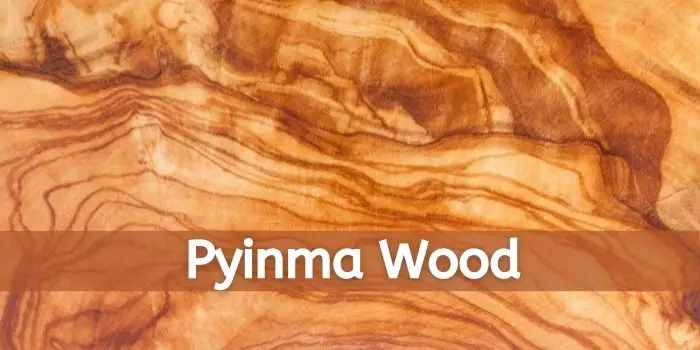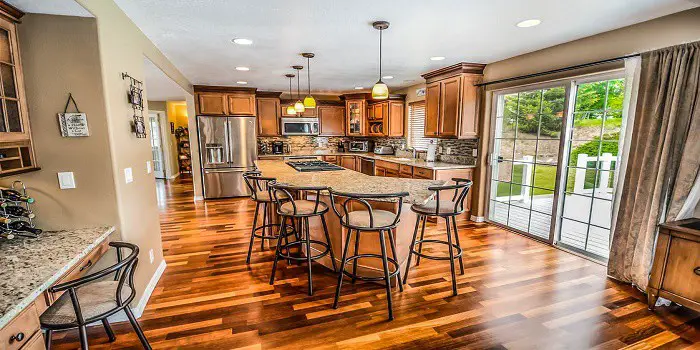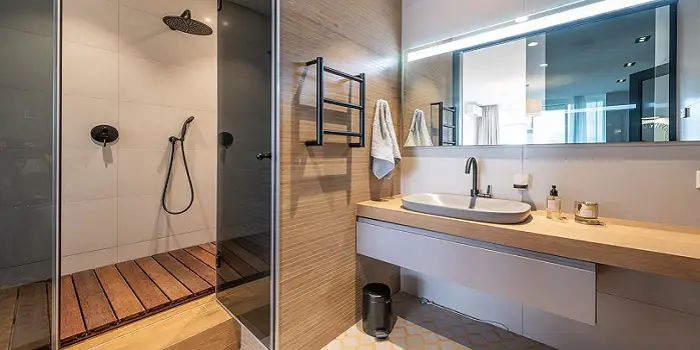
Sometimes called Asian Satinwood, Crepe Myrtle, or simply Pyinma, this type of wood originated in Southeast Asia.
A typical Pyinma tree grows up to 65’ tall and has a trunk diameter that may reach up to 3’.
Although referred to as a “satinwood,” Pyinma is not a member of that family.
In fact, it has relatively little in common with typical satinwoods. Despite this, it is still a fine wood for many woodworking projects.
Pyinma Wood
| Scientific Name: | Lagerstroemia spp. |
| Tree Size: | 40-65 ft (12-20 m) tall 2-3 ft (.6-1 m) trunk diameter |
| Janka Hardness: | 1,090 lbf (4,850 N) |
| Type: | Hardwood |
| Odor: | No smell |
| Specific Gravity (Basic, 12% MC): | .55, .71 |
| Common Uses: | Boatbuilding, general utility work, and furniture |
Appearance
There is no distinctive odor with this type of wood.
Which makes it somewhat unusual. In terms of allergic responses, Pyinma is no real threat for most people.
This means that it carries the standard warnings about the inhalation of wood dust but otherwise seems quite safe, with few, if any, serious allergic reactions.
Color
The heartwood of the Pyinma ranges in color from a reddish-brown to a golden brown.
The sapwood is typically a paler color that may be yellow or gray in nature.
As the wood is exposed to sunlight, the UV rays will cause the colors to darken over time.
Texture & Grains
The overall texture of crepe myrtle is uneven and rather coarse. This generally means that the wood will have a solid natural luster.
The grains tend to be straight, although there are individual pieces that may have interlocked or wavy grains.
You may find a curly grain figure in the wood which is quite common for the species.
Some will exhibit a pronounced curl which is quite desirable among some woodworkers.
Pyinma tends to be durable in terms of resistance to rot, decay, and insects. It generally falls in the middle in terms of its overall resistance compared to most other woods.
Pyinma Wood Workability
Pyinma is easy to work with and tends to produce good results for most projects.
However, the curly grain, which is desired by many, also makes the wood rather more difficult to machine or plain without tearing it out.
While durable, this type of wood does not have blunt cutters, unlike true satinwoods.
But it does finish, turn, and glue quite well. Also, when properly polished, it delivers a high amount of luster.
This makes the wood overall quite workable, and even the curly grains can be overcome with a little extra care.
What is Pyinma Wood Used for?
You’ll find Pyinma used mostly for building boats, turned objects, small specialty items, furniture, and general utility work.
Although not the most commonly used wood for the purposes listed, its unusual curl in the grains makes it highly desirable for creating objects that feature an almost three-dimensional appearance.
Since crepe myrtle wood is also a tough wood, you can use it for making beautiful turned projects such as bowls, chair legs, spindles, railing pieces, etc., on your lathe.
Also, the wood branches of Crepe Myrtles are sturdy, making them ideal for canes. Once you’ve removed the bark, sand the wood until it has a soft sheen.
Then rubbing it with oil – like walnut oil – will darken the wood and give you a beautiful cane or walking stick.
Is Pyinma Endangered – And What About Its Cost?
Pyinma is widely available and not listed as an endangered species. In terms of overall availability, you can find Pyinma growing mostly in Southeast Asia.
For imported wood, the pricing is rather moderate, even for figured wood.
It is possible that this type of wood may be more expensive due to the availability or shipping costs.
But overall, Pyinma is priced reasonably well for wood that is imported throughout most of the world.

Hi, I am Mark Garner a professional carpenter, woodworker, and DIY painter. I live in the small city of Peoria, Arizona as a semi-retired woodworker. I have started this blog with a simple motive to help you with my wood experience in this sector. If you like to know more about what I love doing and how it all got started, you can check more about me here.





